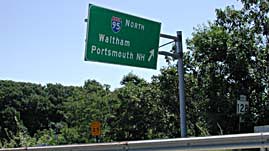When engineers prepare to design and build a structure, be it a skyscraper, a bridge, or a passenger jet, they follow certain steps known as the engineering design process. By working through these steps sequentially, engineers increase the likelihood that their concepts will function properly when built.
After the engineering team has identified the problem or challenge to be addressed, it conducts research in an effort to become more knowledgeable about the many associated variables. Engineers go out into the field to see what's been done before, to learn about the environment in which the structure will function, to consider which materials might be used, and to familiarize themselves with any local, state, or federal guidelines with which their design must comply.
Road signs are erected to guide, inform, and warn drivers and other road users. Before designing a road sign, an engineer must ask and be able to answer several questions. For instance, will the sign be installed above an interstate highway? If so, it would need a freestanding support spanning several lanes and positioned to allow trucks and other high-clearance vehicles to pass under it. Alternatively, could the sign be attached to an overpass, thereby reducing costs and improving safety by minimizing the number of separate structures needed? Whether plain paint or raised reflective lettering will be used on the signboard itself, and just how large the letters or numbers must be, will vary according to the road's lighting conditions as well as to the average speed drivers will be going as they pass the sign. These variables must also be assessed in the research phase.

 Loading Standards
Loading Standards Teachers' Domain is proud to be a Pathways portal to the National Science Digital Library.
Teachers' Domain is proud to be a Pathways portal to the National Science Digital Library.
